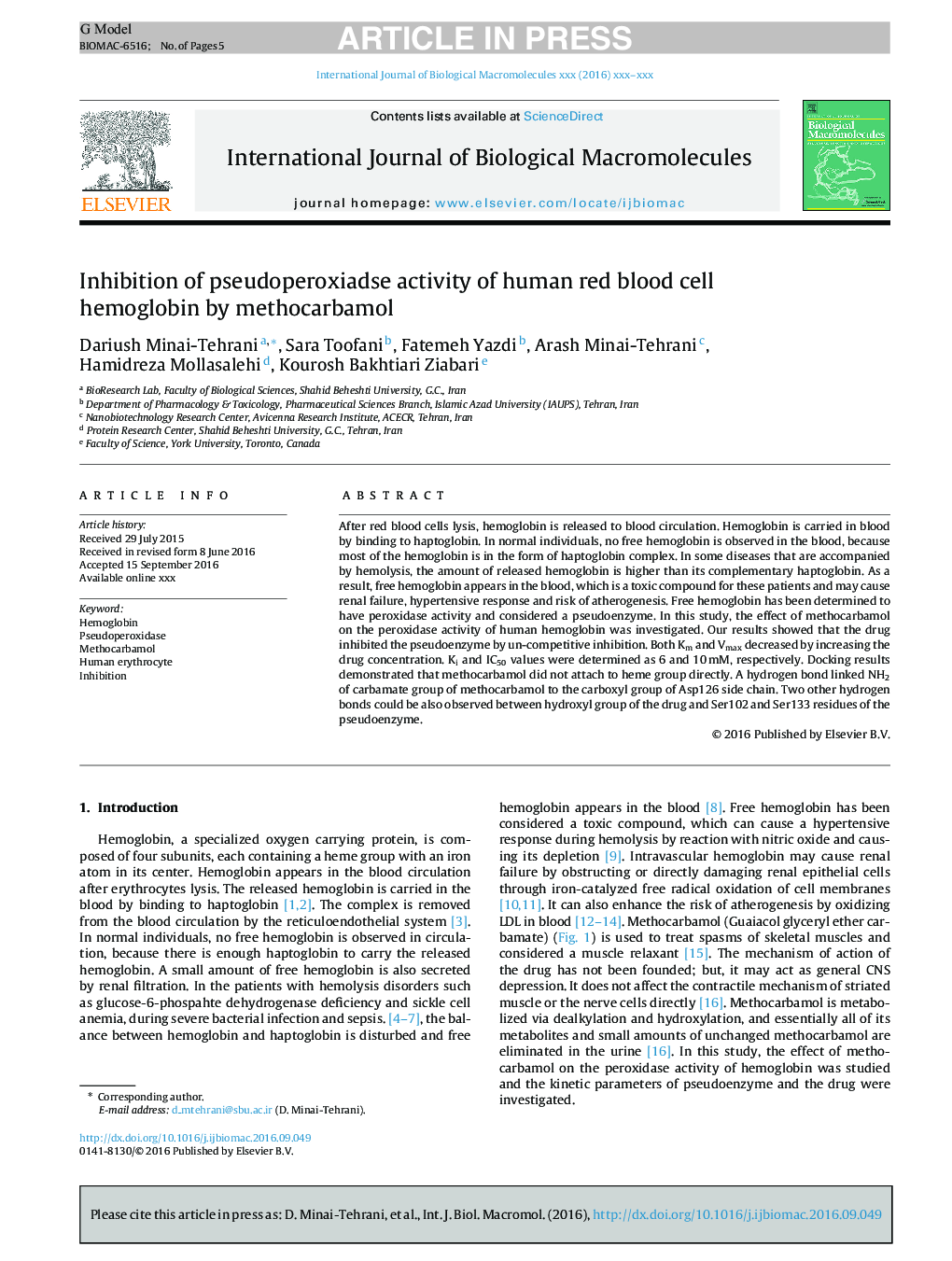| Article ID | Journal | Published Year | Pages | File Type |
|---|---|---|---|---|
| 5512351 | International Journal of Biological Macromolecules | 2017 | 5 Pages |
Abstract
After red blood cells lysis, hemoglobin is released to blood circulation. Hemoglobin is carried in blood by binding to haptoglobin. In normal individuals, no free hemoglobin is observed in the blood, because most of the hemoglobin is in the form of haptoglobin complex. In some diseases that are accompanied by hemolysis, the amount of released hemoglobin is higher than its complementary haptoglobin. As a result, free hemoglobin appears in the blood, which is a toxic compound for these patients and may cause renal failure, hypertensive response and risk of atherogenesis. Free hemoglobin has been determined to have peroxidase activity and considered a pseudoenzyme. In this study, the effect of methocarbamol on the peroxidase activity of human hemoglobin was investigated. Our results showed that the drug inhibited the pseudoenzyme by un-competitive inhibition. Both Km and Vmax decreased by increasing the drug concentration. Ki and IC50 values were determined as 6 and 10Â mM, respectively. Docking results demonstrated that methocarbamol did not attach to heme group directly. A hydrogen bond linked NH2 of carbamate group of methocarbamol to the carboxyl group of Asp126 side chain. Two other hydrogen bonds could be also observed between hydroxyl group of the drug and Ser102 and Ser133 residues of the pseudoenzyme.
Related Topics
Life Sciences
Biochemistry, Genetics and Molecular Biology
Biochemistry
Authors
Dariush Minai-Tehrani, Sara Toofani, Fatemeh Yazdi, Arash Minai-Tehrani, Hamidreza Mollasalehi, Kourosh Bakhtiari Ziabari,
